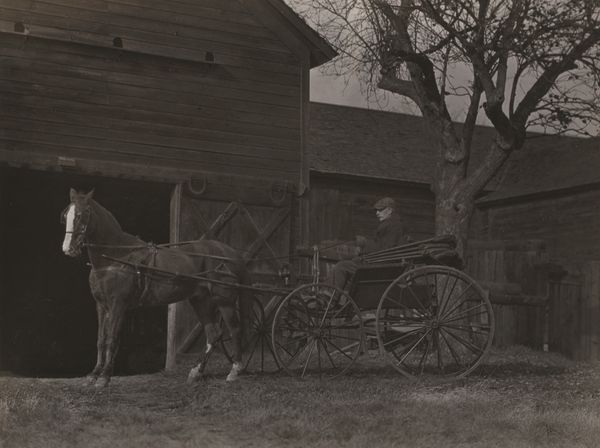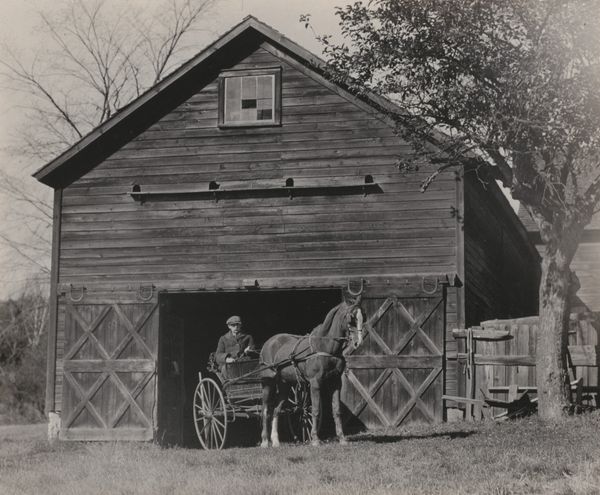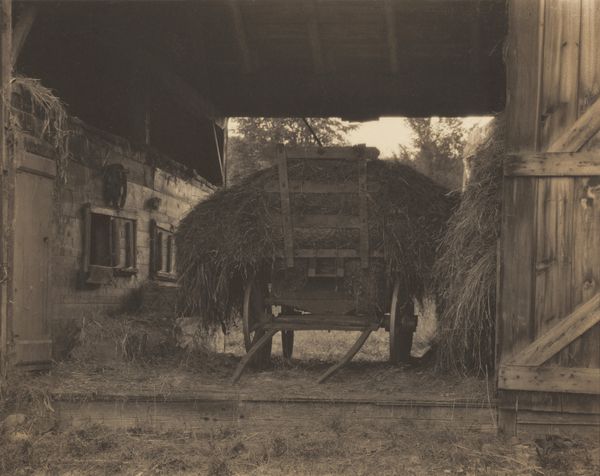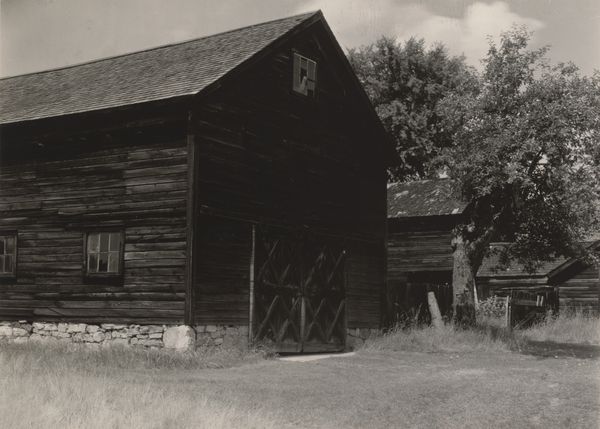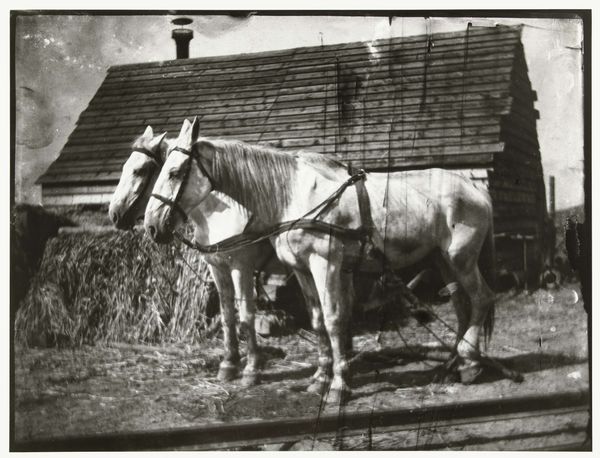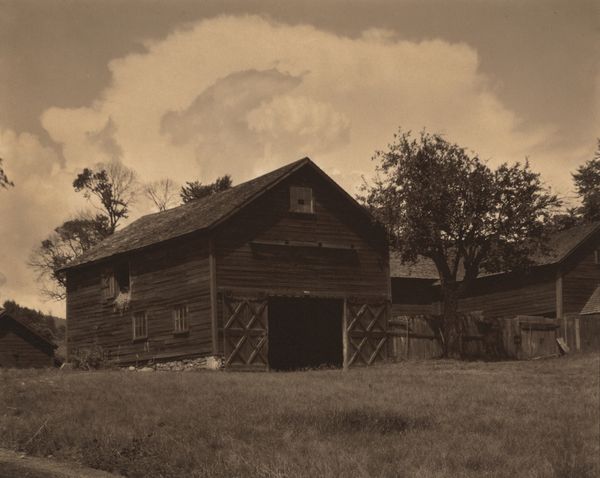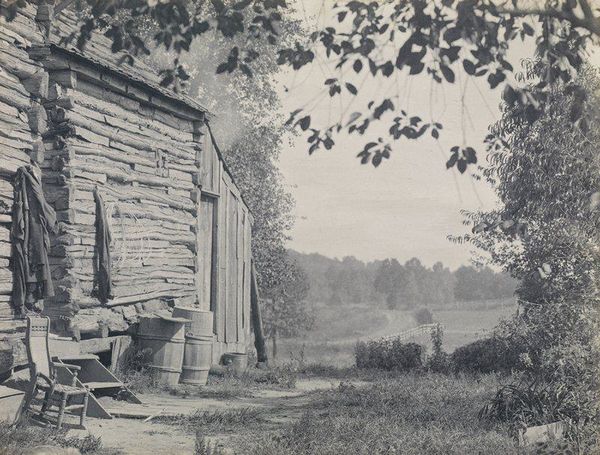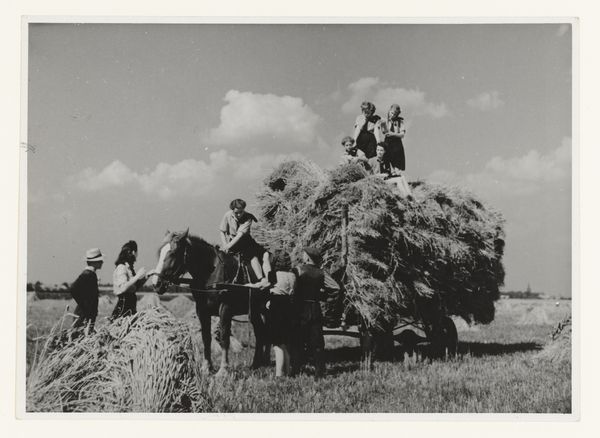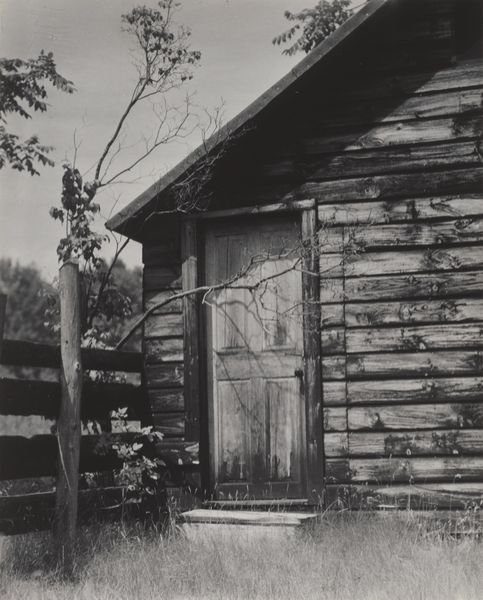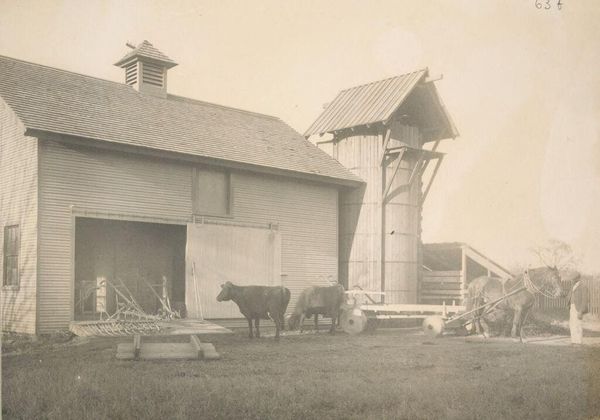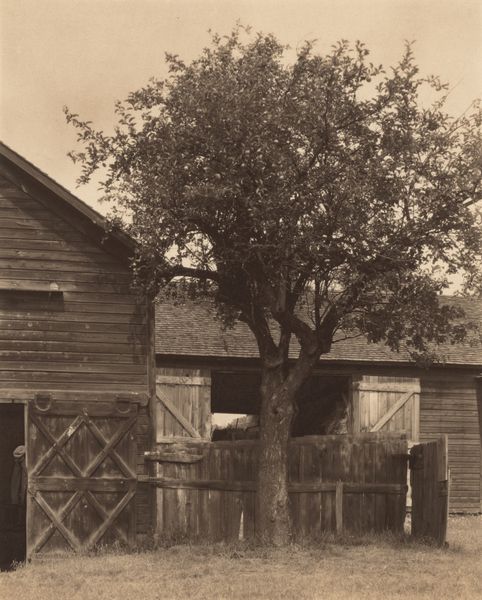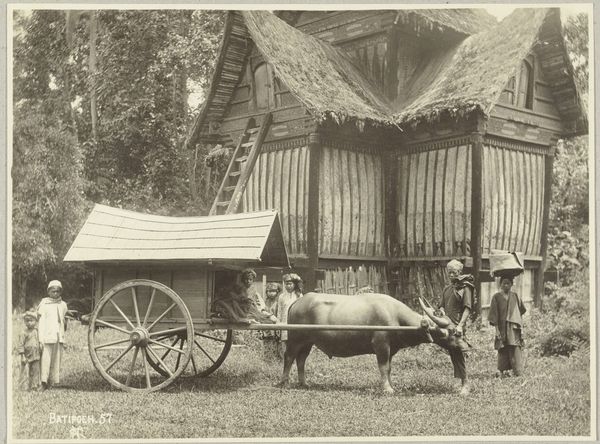
photography, gelatin-silver-print
#
black and white photography
#
pictorialism
#
landscape
#
black and white format
#
photography
#
black and white
#
gelatin-silver-print
#
monochrome photography
#
monochrome
#
modernism
#
realism
#
monochrome
Dimensions: sheet (trimmed to image): 9.1 × 11.7 cm (3 9/16 × 4 5/8 in.) mount: 34.3 × 27.5 cm (13 1/2 × 10 13/16 in.)
Copyright: National Gallery of Art: CC0 1.0
Curator: Alfred Stieglitz's 1922 gelatin-silver print, "The Hay Wagon and Barn," captures a seemingly simple rural scene. Editor: Immediately, I'm struck by the image's sense of stillness, almost solemnity. The grayscale lends it an antique aura, amplifying the quiet dignity of the scene. Curator: Precisely. Stieglitz, known for elevating photography to fine art, had a knack for choosing subjects from everyday life, transforming them into powerful commentaries. Consider the hay wagon itself—it speaks of manual labor, agrarian life, the cycle of harvesting and consumption. The image embodies a tangible connection to the land. Editor: I see the cart loaded with hay as a symbol, heavily laden, representing the burdens and rewards of agricultural existence, doesn't it? Note how it is positioned in front of the barn's entrance: the hay about to be received into the wooden structure represents provision and preservation against leaner seasons to come. The horse looks tired and resigned. There's definitely a symbolic narrative at play here. Curator: The process and materials are integral. Gelatin silver printing, favored for its tonal range and sharpness, allowed Stieglitz to depict the textures of wood, hay, and the horse's coat with remarkable clarity. These material qualities elevated what might seem like a simple snapshot into a considered object of art. Think about the labor involved in crafting the image too—from preparing the chemicals to carefully timing the exposure. Editor: That's where our interpretations diverge. While you foreground the material reality, I lean towards its psychological impact. I wonder if it intends to depict honest, hard-won survival and speaks to universal themes of toil, the relationship between man and nature, and the cyclical passage of time through seasonal activities. It might well connect to a cultural memory of simpler lives led on farms. Curator: Perhaps it's a both/and situation? Ultimately, the image reflects on the conditions of its creation: the labor invested in making the photograph parallels the labor in the depicted scene. The materiality allows those layers to become apparent. Editor: Perhaps you're right. Viewing it through your lens underscores its connection to the material world while my perspective allows for the interpretation of deeper cultural and historical narratives. Both valid, I think. Curator: It just shows how a seemingly simple artwork reveals the complex relationship between objecthood, labor, and artistry. Editor: And how such art can operate as an icon reflecting timeless and shared experiences, regardless of background or time period.
Comments
No comments
Be the first to comment and join the conversation on the ultimate creative platform.
